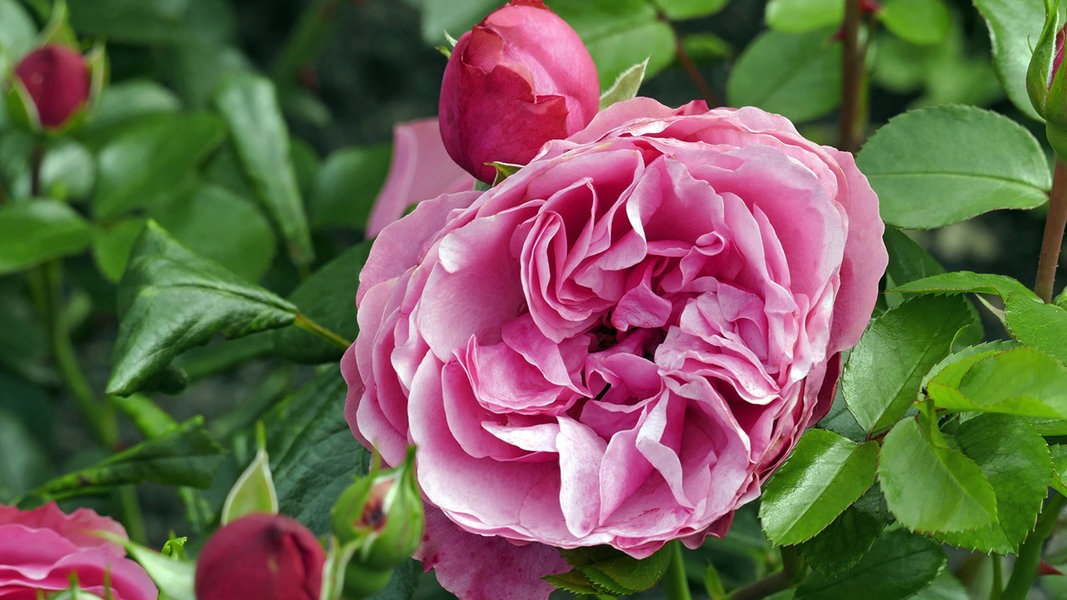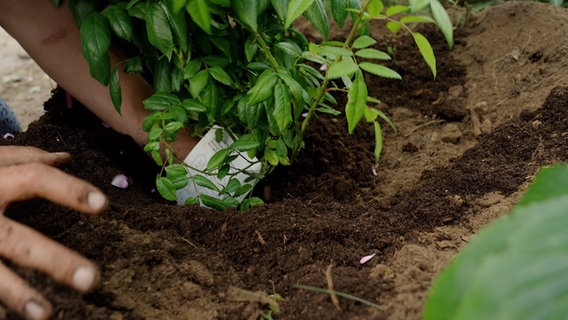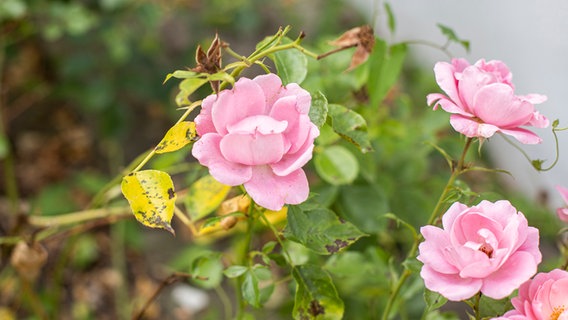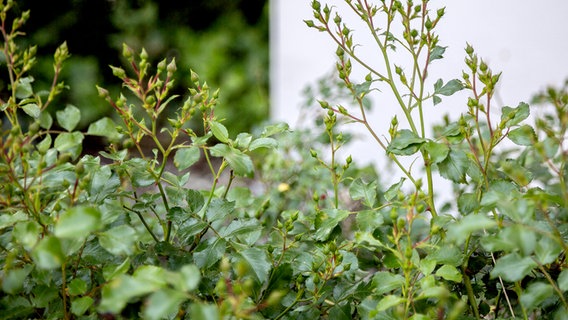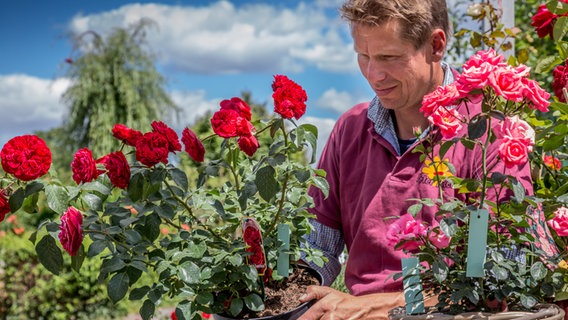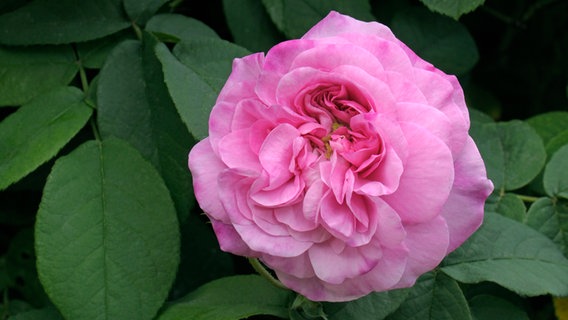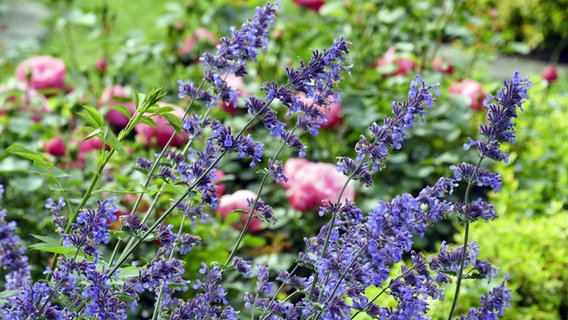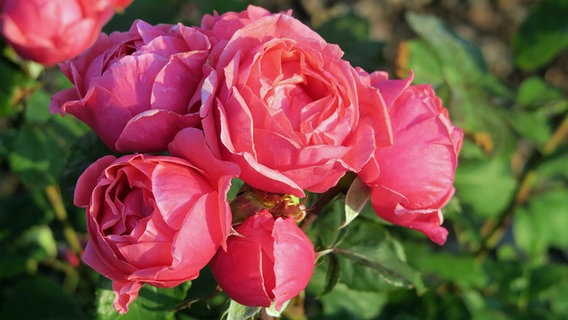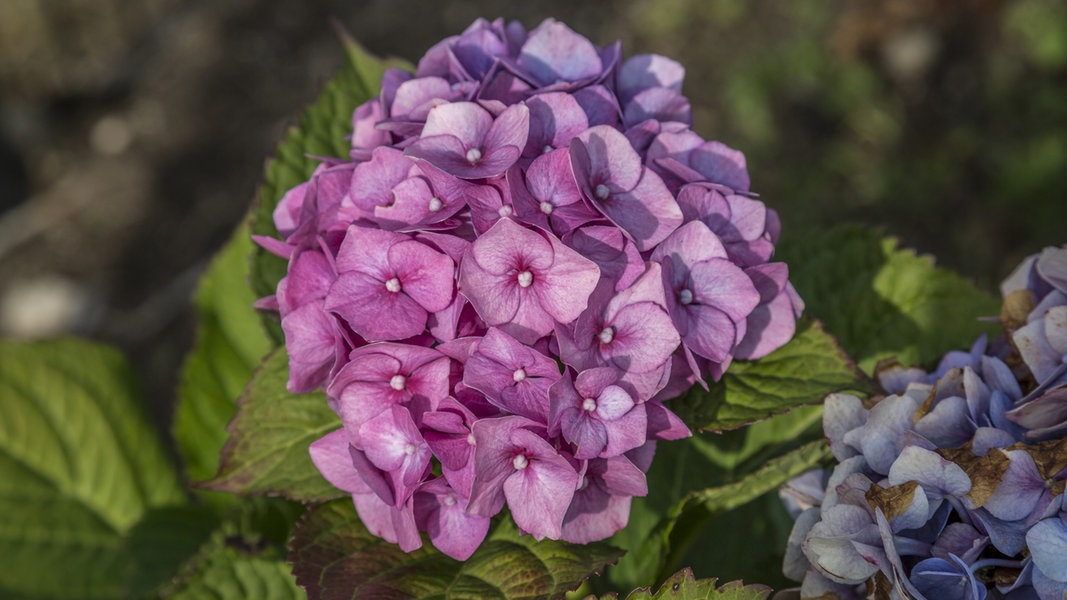As of: April 24, 2024 10:48 a.m
It is considered the queen of flowers: the rose. Anyone who chooses the right location and has a little time for care, pruning and fertilization will be rewarded with a magnificent plant.
The rose, often referred to as the queen of flowers, is an integral part of European garden culture. Basically, between A distinction is made between wild roses and cultivated roses. Wild roses are untreated in terms of breeding, do not have double flowers and form rose hips. they offer Bees and bumblebees have enough food. Cultivated roses are the result of professional crossing and refinement.
Never water roses in full sun
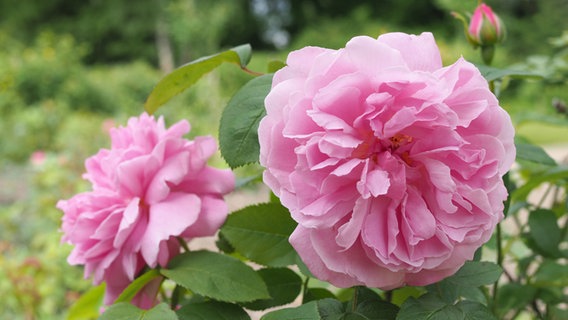
Roses should have as airy a location as possible.
The following applies to all roses: They need a sunny and airy location to protect against fungal diseases. For this reason, it is advisable never to water directly over the leaves, otherwise fungal spores can easily settle on them. If you water in full sun, you also risk burning the leaves. The roses tolerate stale, ideally lukewarm water best early in the morning. Water directly in the root area. Important: Avoid waterlogging. Accordingly, the garden soil should be water-permeable, deep, humus-rich and, ideally, loamy-sandy.
When planting roses, place the grafting site deep
The best planting time is in autumn, also for bare root roses. When planting cultivated roses, make sure that the grafting point (a prominent thickening on the root collar from which the noble shoot grows) is at least five centimeters deep in the soil. This has the advantage that this sensitive part of the rose is protected from frost in winter and does not have to be piled up with soil. Even after severe frost, the rose usually sprouts again.
Size of the planting hole depends on soil conditions
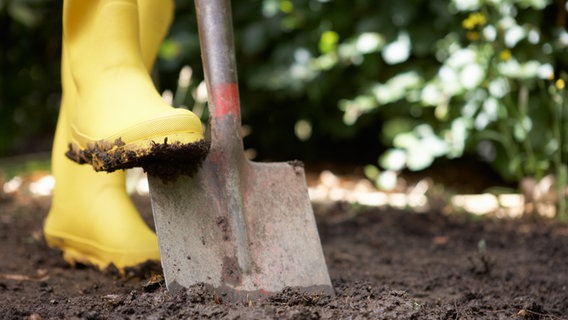
If the soil is sandy, the planting hole should be dug generously.
The optimal size of the planting hole depends on the nature of the garden soil. For sandy soils it should be 30 x 30 centimeters wide and 60 centimeters deep. It is best to fill the planting hole with special soil for roses or the existing soil Improve compost. If the soil is clay, it is sufficient to dig a planting hole that is twice as deep as the plant pot.
In order for the rose to thrive optimally, it should be planted in a location where no other rose has grown in the past seven years. Reason: The root remnants of the old rose can weaken the new one so that it does not grow and bloom vigorously. If you still want to plant a rose in the old location again, you should – as with sandy soil – dig a large planting hole and fill it with rose soil.
Water the rose before planting, but do not immerse the root ball in water as is usual with other plants. Otherwise there is a risk that the root ball will tear apart and many fine roots will be torn off. It is better to water the rose thoroughly after planting. It is best to apply organic fertilizer such as horn shavings beforehand.
Further information
The most important time for pruning roses is spring
The most important time for pruning is spring; the extent depends on the type of rose. It can also make sense to prune some roses further in summer. In the case of shrub roses, cutting off the so-called mummies, the faded flowers, stimulates a second shoot. Cutting roses in the fall is usually unnecessary.
This is what matters when cutting roses
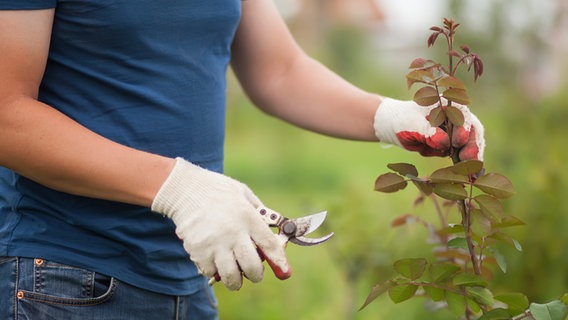
Roses are always cut above an outward-facing eye.
The rule of thumb is: strong pruning promotes strong growth, weak pruning promotes weak growth. The cut is always done above an eye that projects outward (shoot). New shoots only form at these eyes, because this is the only place where the plant’s supply lines run. If you cut this, the stem is no longer supplied and dead wood is created. The correct interface is therefore half a centimeter to one centimeter above the eye.
Place the rose scissors at a slight angle and cut off the shoot in one movement. The slanted cut guarantees that irrigation and rain water is directed away from the eye and that no breeding ground for pathogens is created there.
Prevent diseases when pruning roses
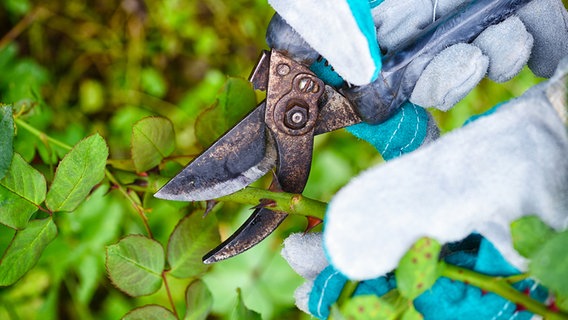
An oblique cut ensures that water is directed away from the so-called eye and that pathogens cannot form.
Always remove cut shoots and fallen leaves immediately and preferably throw them in the trash and not in the compost. This way, rose lovers can be sure that no fungal spores or other pathogens enter the natural garden cycle. The general rule is: Everything that is dry, withered or dead must be removed from the plant and the bed. Otherwise pests will collect in them and overwinter in the ground.
It is also important to use clean tools so that pathogens are not transferred to other plants. Therefore, always disinfect the rose scissors, for example with cleaning spirits or a small burner.
Further information
Fertilize roses properly
Roses should be fertilized twice a year. Depending on the weather, it starts around mid-March when the plant sprouts again. Organic fertilizer such as horn shavings is suitable here. This is gradually absorbed into the soil and supplies the plants primarily with nitrogen over a longer period of time.
A second fertilization should take place in June after the main flowering. At this point, the fertilizer should contain more potassium and phosphorus. Fertilizing later in the year is not recommended as the new shoots will not mature properly until winter and may freeze.
Typical rose disease: infestation by star sooty mold
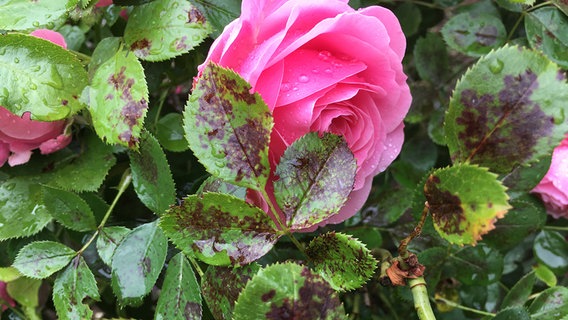
Black spots on leaves that then turn yellow: Star sooty mold is a typical fungal disease.
Black spots on leaves that turn yellow over time indicate sooty mold on the rose. If the infestation is severe, the leaves must be meticulously removed and disposed of with household waste. Humid conditions promote the spread of the fungus because after about seven hours on the wet leaves, the spores begin to germinate. When using chemical pesticides (fungicides), always pay close attention to the manufacturer’s instructions for use. A purely biological remedy helps as prevention – a decoction of field horsetail, with which the roses are sprayed in spring and summer.
Combat powdery mildew, rose rust and sawfly infestations
Roses are often affected by powdery mildew or rose rust. Here it is also important to prevent the disease by choosing an optimal location or to combat the fungus with natural remedies such as milk. If the leaves of the rose are twisted, they probably have an infestation by the rose leaf wasp.
Rose leafhopper sucks out green leaves
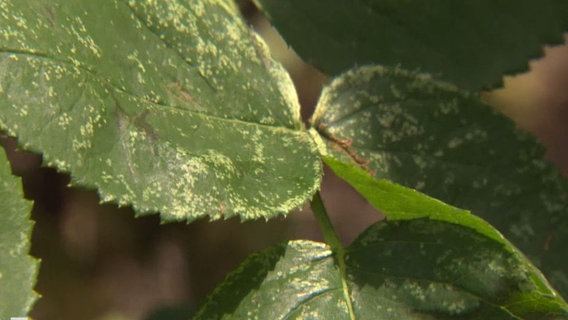
White spots on the leaf: the damage caused by rose leafhopper infestation.
The cream-colored larvae of the rose cicada, which are approximately three millimeters long, suck the green leaf from the leaves from May onwards. These then develop white or yellowish spots that look faded. The insect sits under the leaves and appears more frequently in dry conditions. When fully grown it is pale green and has wings. If the infestation is severe, the rose petals dry up and fall off. A decoction of field horsetail, which is sprayed on the plant as a preventive measure, also helps against rose leafhoppers.
Further information


